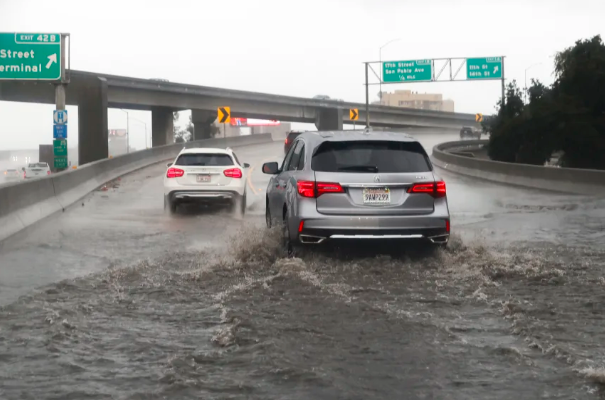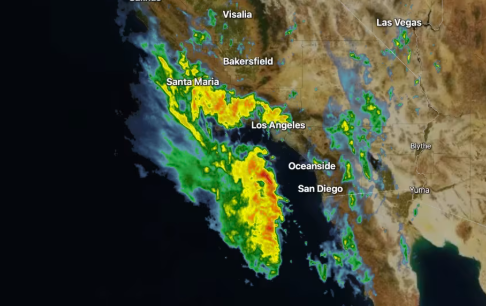A strong Pacific storm is bringing soaking rain to Southern California, increasing the risk of life-threatening flooding, mudslides and debris flows, especially near burn scars in the Los Angeles area.
Evacuation orders are in effect for “vulnerable properties” within the Palisades, Hurst and Sunset burn scars, according to a Friday news release from Los Angeles Mayor Karen Bass.
The threat is tied to a multi-day storm that began Thursday in northern and central California. Widespread rainfall totals of 1 to 2 inches fell along the coast into Friday morning, with isolated amounts of 3 to 5 inches in the coastal mountain ranges.
San Francisco received nearly an inch and a half of rain Thursday, almost 75% of November’s average. November marks a transition into the rainier winter season, with December to February marking the wettest months of the year in the Bay Area.

The flood threat has intensified since then as an atmospheric river feeds moisture from the ocean into the storm.
Parts of the region – including much of the Los Angeles area – are under a Level 3 of 4 risk of flooding rainfall on Saturday, according to the Weather Prediction Center. The first round of rainfall soaked the same region Friday, but Saturday’s rain is expected to be heavier, with rainfall rates likely reaching an inch per hour at times.
This second round of rain has the added danger of falling over already-wet ground, which struggles to absorb additional rain and will start flooding quicker than dry ground.
There’s also the potential for isolated severe thunderstorms embedded within the heavier rain Friday night into Saturday. Some of these storms could produce damaging wind gusts, hail and perhaps a short-lived tornado.
Much of the Los Angeles area is under a flood watch through Saturday evening. The National Weather Service warns that the storm could trigger life-threatening debris flows, knock out power and flood roads.
Burn scar areas on alert
Areas burned by recent wildfires in the region will be particularly vulnerable to mudslides and debris flows.
Not only do wildfires destroy vegetation that would normally soak up some of the rainfall, but their extreme heat can alter the soil, creating a water-repellent layer just below the surface.

